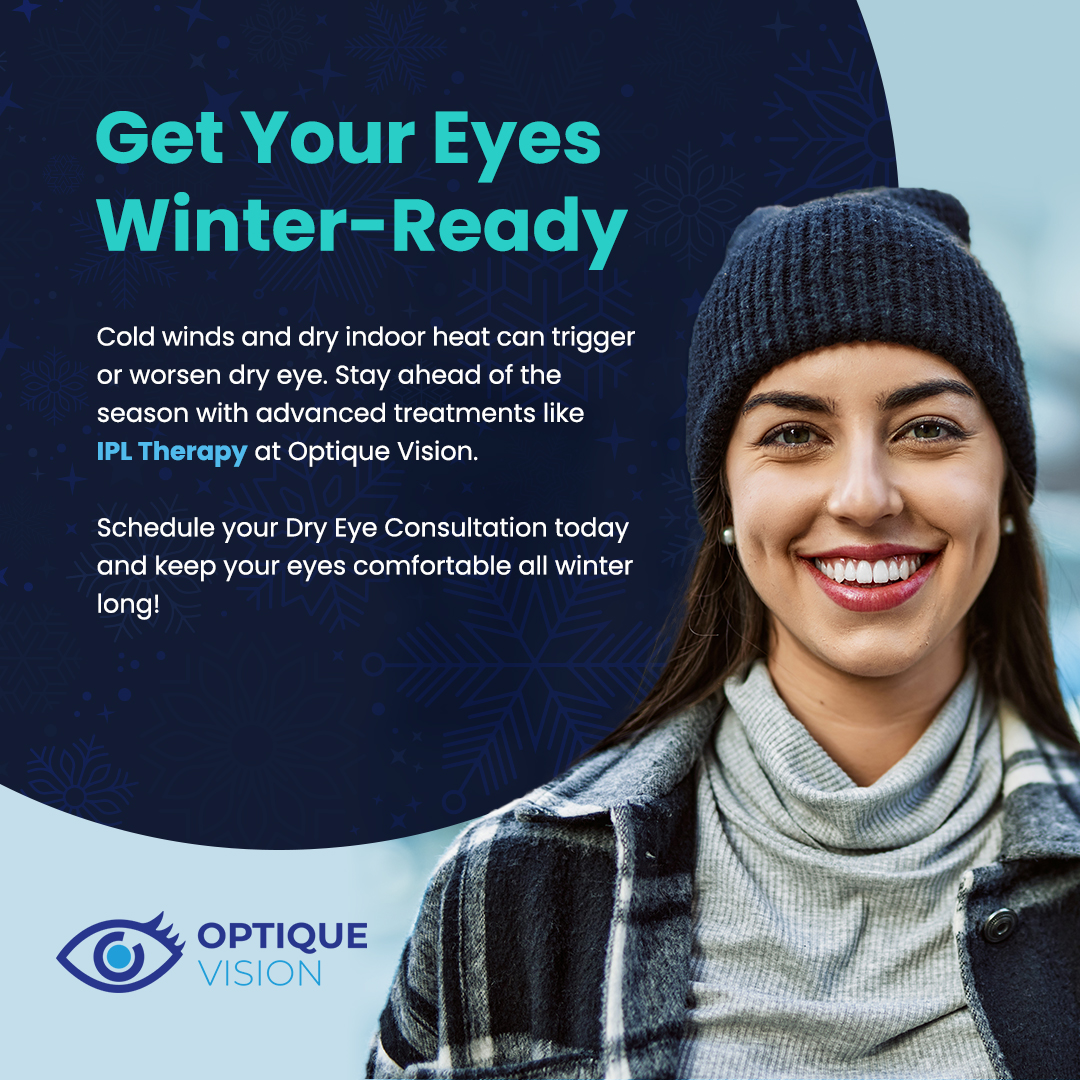Optique Vision Blog
Learn more about eye care in our blog!

Myopia is a growing concern among children and young adults. As the prevalence of myopia increases, so does the demand for effective management strategies to slow its progression. One of the most promising solutions available today is myopia control contact lenses. These specialized lenses are designed to not only correct vision but also help slow the elongation of the eye that leads to worsening nearsightedness.

Glaucoma is one of the leading causes of irreversible blindness worldwide, yet it is often misunderstood. This eye condition, which affects millions globally, progresses silently, often without noticeable symptoms in its early stages. At Optique Vision, we believe in empowering our patients with the knowledge to safeguard their eye health.

Dry eye syndrome can be more than just an occasional irritation; for many, it’s a chronic issue that impacts daily comfort and vision quality. Optique Vision is excited to offer Envision by InMode treatments, which utilize two advanced technologies, Forma-I and Lumecca-I, to target the root causes of dry eye with precision and effectiveness.

Eye care has evolved significantly over the years, thanks to advancements in technology that allow for earlier diagnosis, more accurate treatment, and improved patient outcomes. At Optique Vision, we are proud to offer cutting-edge tools and treatments that enable us to provide top-tier comprehensive care. From advanced imaging techniques to revolutionary therapies, here’s a look at some of the most impactful technologies shaping modern eye care.

Cataracts are a common eye condition that can significantly impact your vision if left untreated. Understanding the causes, risk factors, and preventive measures is crucial for maintaining optimal eye health.

Your vision is one of your most precious senses, and when it's not functioning at its best, it can have a significant impact on your daily life. There are numerous vision correction options available, including glasses, contact lenses, and laser vision correction surgery.

As a parent, you want the best for your child's overall well-being, and their vision health is a critical component. Regular pediatric eye exams can help identify vision problems early on, allowing for timely intervention and treatment. These exams are recommended starting from infancy and should continue throughout your child's developmental years.

Dry eye is a common and often chronic condition that affects millions of people worldwide. It occurs when your eyes do not produce enough tears or when the tears evaporate too quickly, leading to discomfort, irritation, and even vision problems. Dry eye can be a frustrating and debilitating condition that can significantly impact your quality of life.

In the ever-evolving landscape of eye care, technological advancements have paved the way for groundbreaking solutions that enhance patient comfort and improve treatment outcomes. One such innovation that has captured the attention of eye care professionals is ENVISION by INMODE, a cutting-edge technology that promises to revolutionize the way we approach eye care. As you embark on this journey, prepare to be amazed by the possibilities that lie ahead.

Having clear vision is not only essential for daily activities, such as reading, driving, and recognizing faces, but it also plays a crucial role in overall well-being. Our eyes provide us with a wealth of information about our surroundings, allowing us to navigate the world safely and efficiently. It is essential to protect and preserve our vision through regular eye care.









